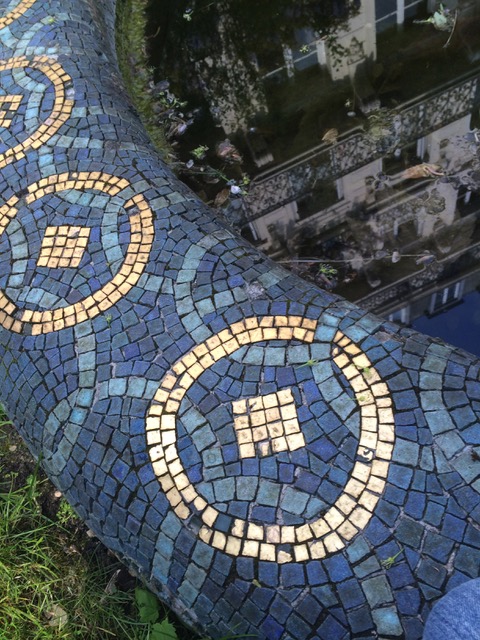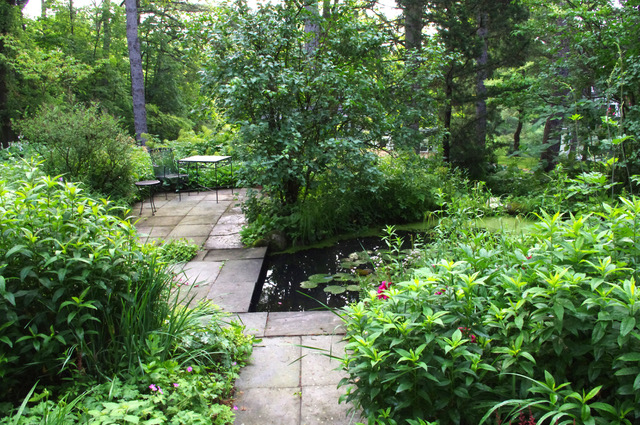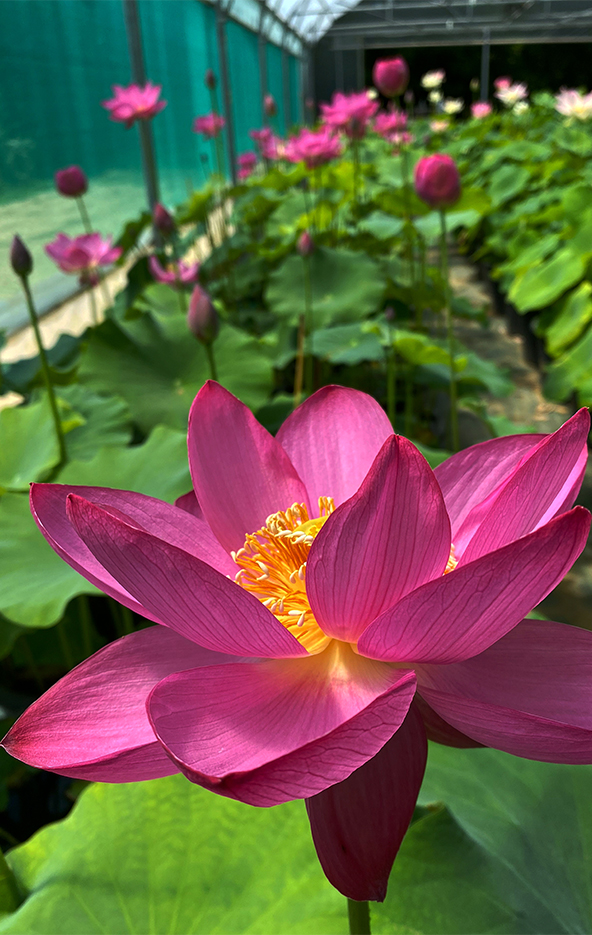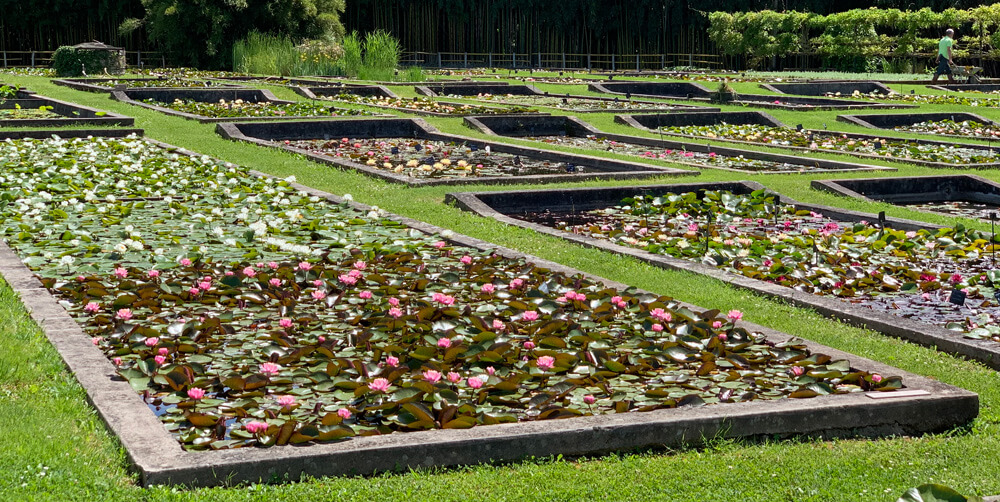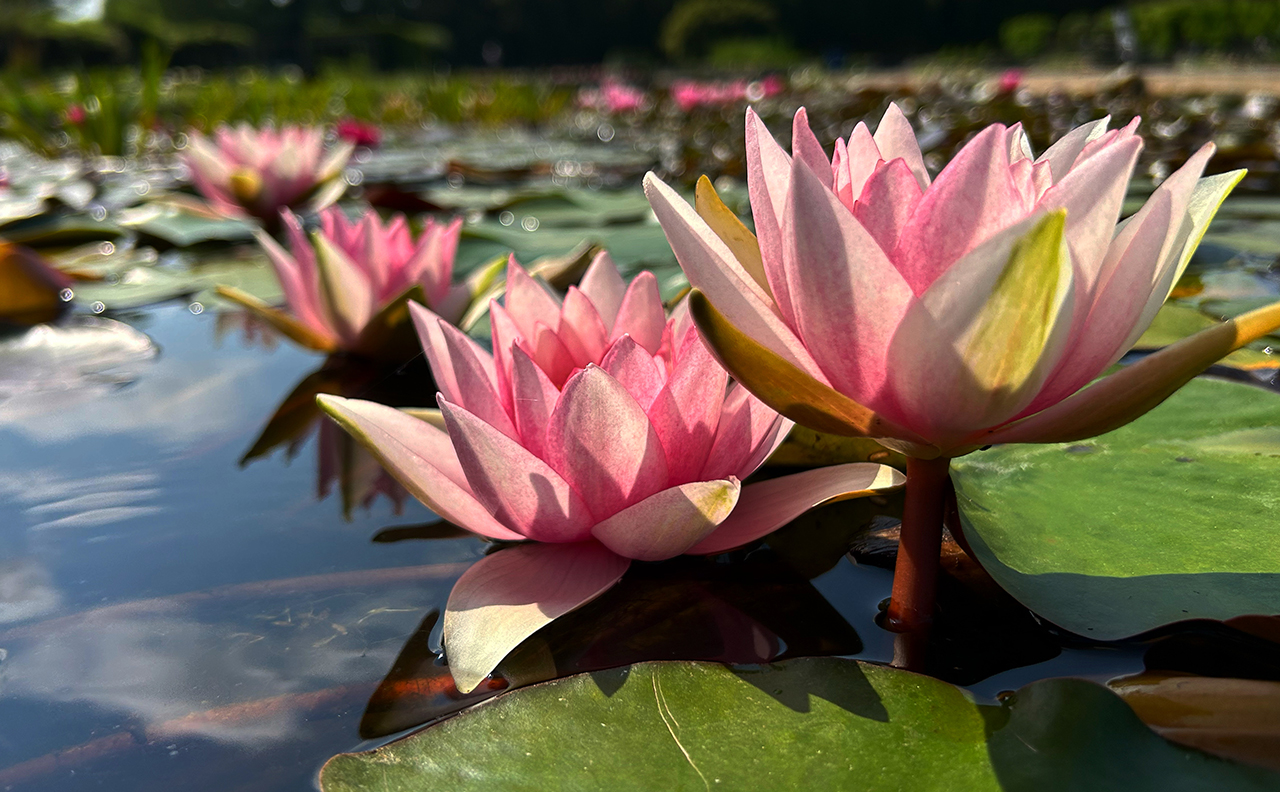




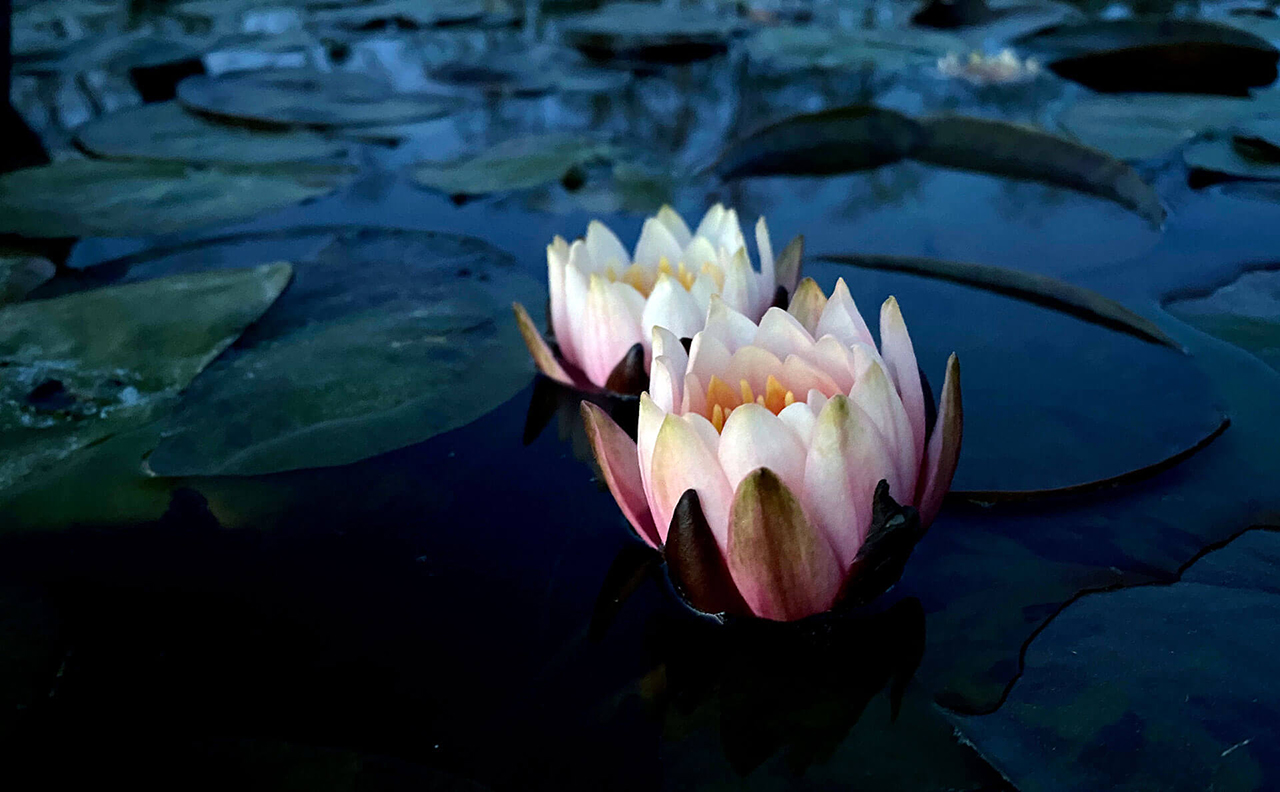
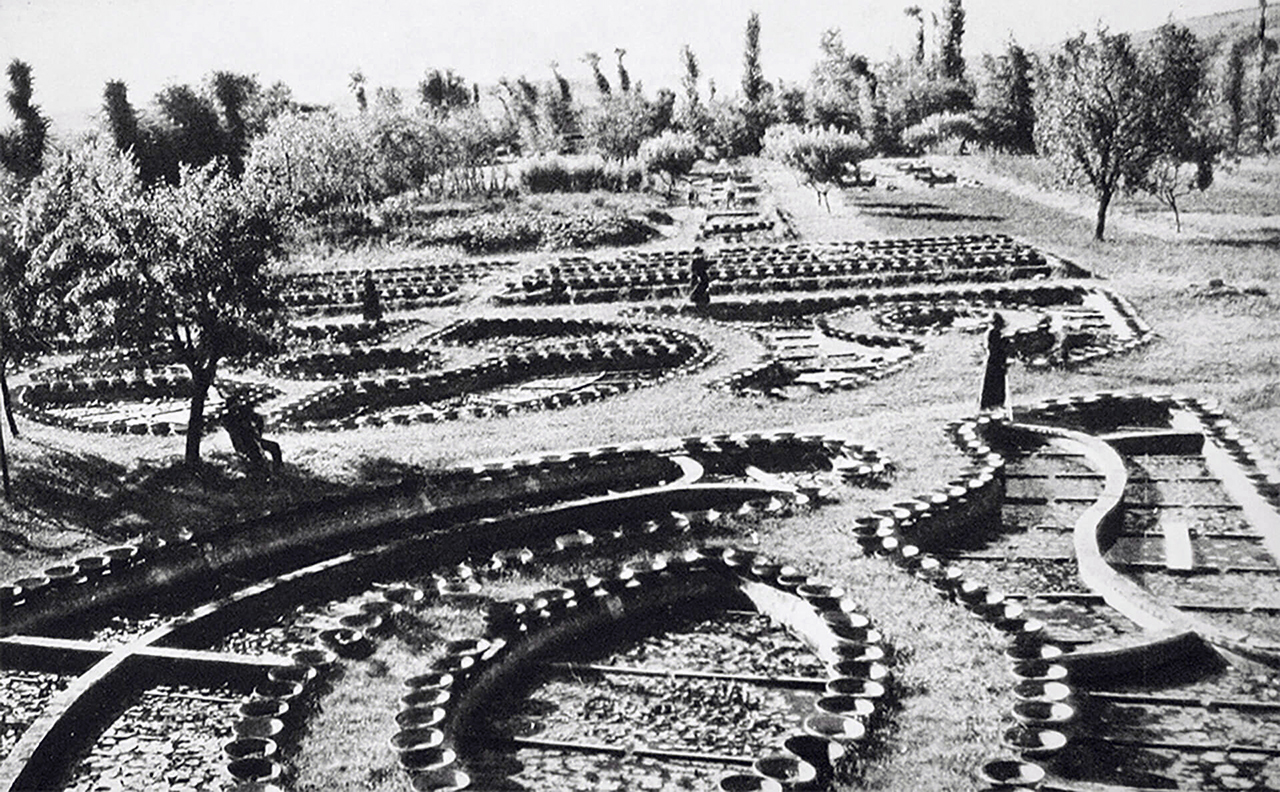
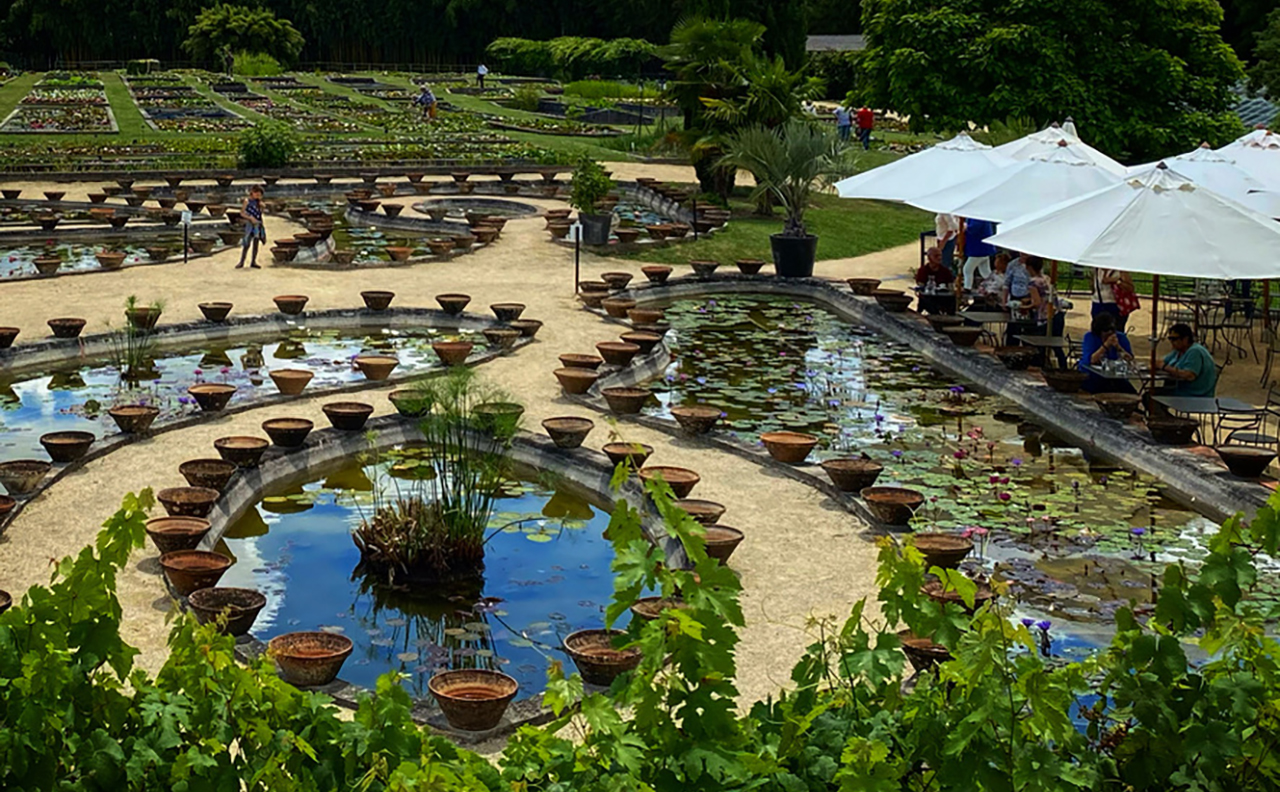
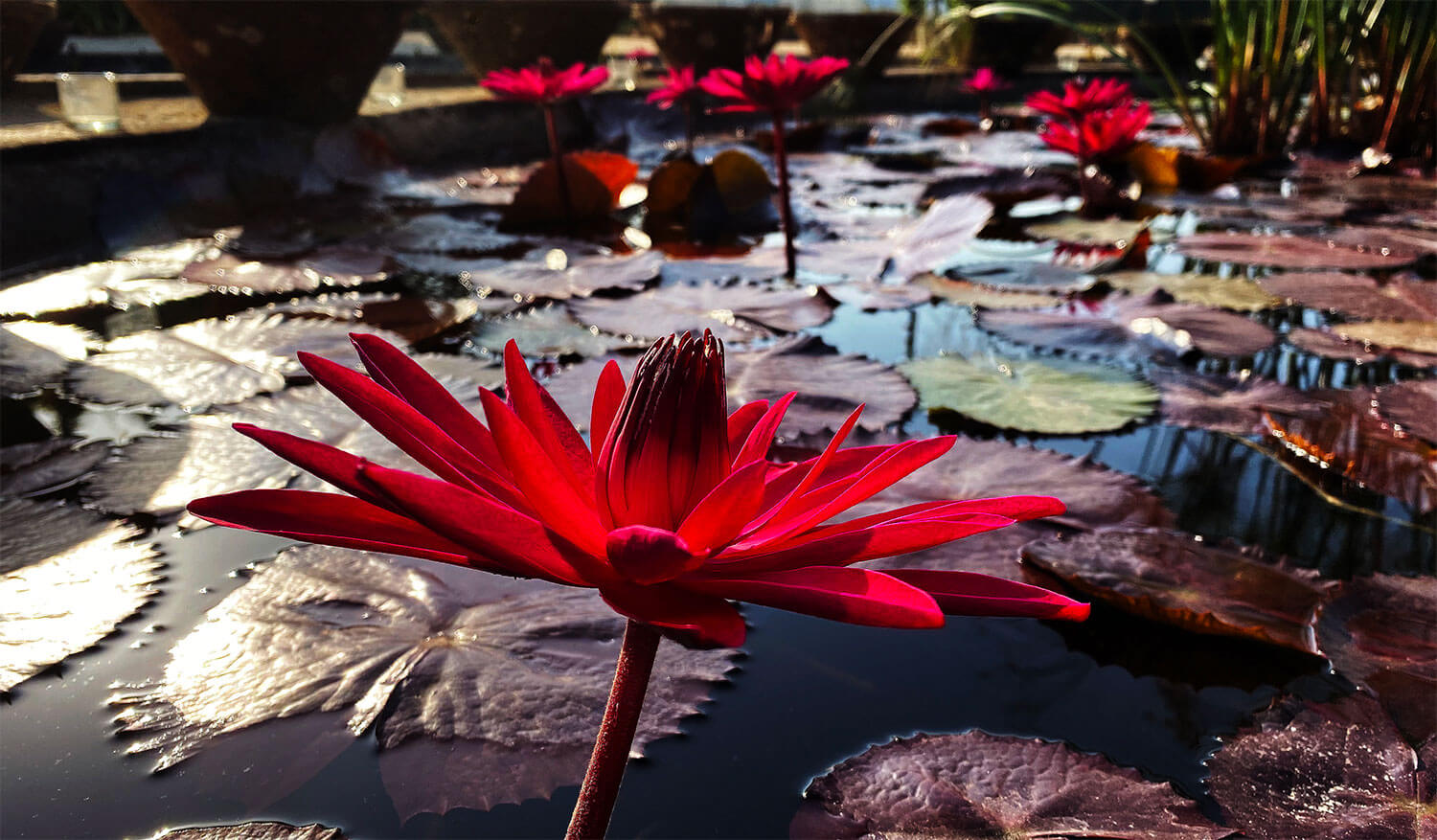



Bienvenue dans le monde de Latour‑Marliac
Boutique en ligne :
Spécialistes des nénuphars et lotus depuis 1875.

La pépinière Latour-Marliac propose une large gamme de plantes aquatiques parmi lesquelles plus de 250 variétés de nénuphars rustiques et tropicaux, et une sélection unique de lotus du monde entier.
Dans les bassins conçus par son fondateur, le botaniste Joseph Bory Latour-Marliac à la fin du 19è siècle, le domaine perpétue un savoir faire d'innovation botanique sans équivalent en France.
Le charme unique de la belle époque.

Au fil des sentiers, évadez-vous sur trois hectares labellisés Jardin Remarquable par le Ministère de la Culture.
Vous y découvrirez une variété exceptionnelle de plantes aquatiques, de lotus et de nénuphars, dont la Collection nationale du genre Nymphaea (nénuphars).
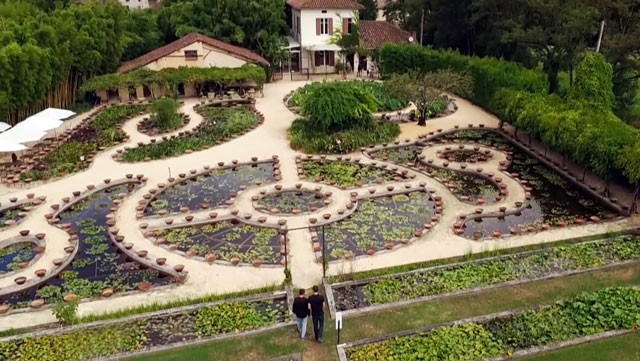


Déjeunez parmi les nénuphars.

Lieu de rêverie, lieu de détente, le Café Marliacea est le restaurant en terrasse des jardins Latour-Marliac. Admirez en déjeunant la collection nationale du genre Nymphaea (nénuphars) et les multiples variétés de plantes aquatiques autour de l'étang naturel
et dégustez une cuisine maison à partir de produits locaux du Sud-Ouest.
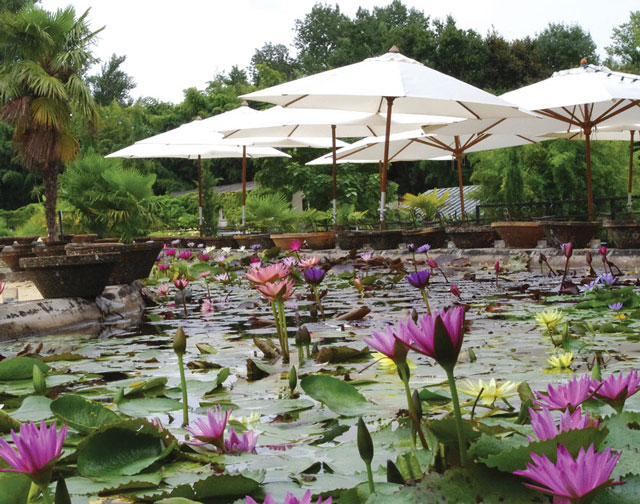


Source d'inspiration pour Claude Monet.

Entre correspondances, objets personnels et esquisses des bassins de plantes aquatiques que nous connaissons aujourd'hui, notre musée vous fera revivre la rencontre de ces deux créateurs de génie que furent le peintre Claude Monet et le botaniste Joseph Bory Latour-Marliac. Ensemble, ils inventent le nénuphar de couleur au 19è siècle et l'inscrivent au patrimoine français.

Emportez la magie des plantes aquatiques chez vous.

En vente sur place ou via notre boutique en ligne sur latour-marliac.com, créez votre jardin aquatique avec nos conseils de plantation et le savoir de jardinage aquatique de nos illustres prédécesseurs.
